The rarity of Paraiba tourmaline is why the prices for it are rocketing.
Three years ago, big jewelry houses laughed at Sam Sulimanov, owner of Samuel Sylvio Designs in New York City, when he tried to persuade them to purchase Paraiba tourmaline. The reason? The merchants did not sell “semi-precious stones,” he recollects.
A year and a half later, Sulimanov was the one laughing. They called him asking for a pair of Brazilian ovals for a client and were shocked at the price. “They just didn’t know what it was,” he says.
Brazilian brilliance
Today, many know about Paraiba tourmaline. Its distinctive “Windex blue” and “Scope green” colors — which no other tourmalines exhibit — result from traces of copper and manganese. The stone gets its name from Brazil’s Paraiba state, where it was initially found, but there are also deposits in Mozambique and Nigeria.
“It is a generally accepted term that material from both Brazil and Africa are called paraiba, but it’s a preference of people in the industry how they describe it — with a capital ‘P’ or not,” says Doug Hucker, CEO of the American Gem Trade Association (AGTA). He adds that his group has no rules for the stone’s nomenclature.
Some gemologists say this tourmaline variety is rarer than pink diamonds, and because of limited availability, its prices have skyrocketed. The asking price for an oval-shaped, 4.61-carat rock of Paraiba origin is $150,000 a carat, according to Stuart Robertson, research director at trade publication GemGuide in Glenview, Illinois.
“I have not seen a non-Brazilian stone hit that vibrant, electric neon intensity of color,” he says. “The Mozambique stones are attractive, but they trade below the price of Brazilian stones.”
Los Angeles-based jewelry designer Victor Velyan uses a lot of Mozambique tourmaline — also called cuprian elbaite — in his high-end pieces because that’s what’s available. But he’ll also use Brazilian goods “every time I can get my hands on it,” he says.
Low supply, high demand
Those occasions are infrequent, though, because very little new material is being mined. “Supply is nil,” reports Bill Larson of Pala Gems in Pala, California. Larson was one of the first to deal in the material in the late 1980s, buying and cutting 22 pounds of rough, of which he sold 99% over five years. Early on, the Japanese bought up a lot of the goods, which were priced cheaply in comparison to today: $150 to $750 a carat.
Although Paraiba tourmaline still lacks the name recognition of the Big Three stones — ruby, sapphire and emerald — admirers continue to grow. Among them are working women who fear diamonds might attract the wrong sort of attention, according to Sulimanov: “Women with power who are afraid to wear a big diamond feel safe wearing Paraiba because nobody knows what it is.”
Still, the price tag can be an obstacle to ownership for many potential buyers. “Customers now are seeing prices that say, ‘Don’t buy me,’ even though the demand is there,” says Larson.
PARAIBA BY DESIGN
Graziela Kaufman, Designer, Graziela Gems
“I discovered Paraiba tourmaline over 15 years ago, when no one knew about it, and was mesmerized by it. I grew up in Brazil and have been around mine towns and countless colored gemstones, but I had never seen anything so vibrant, so electric, so full of life like a Paraiba tourmaline. I design with Paraiba as the main stone [or] as accents. I love to work with its cabs and slices also; every form of the gem is magical. I feel that every woman is immediately attracted to its color, and it appeals to the jewelry connoisseur who has a discerning eye and loves unusual, special pieces.”
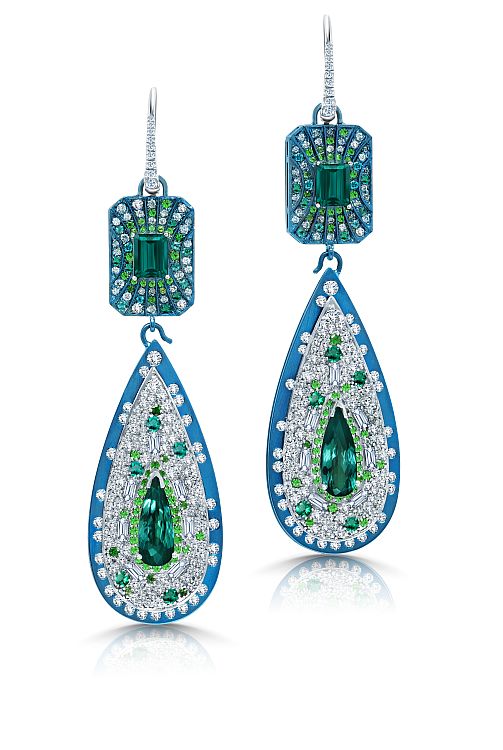
Vladyslav Yavorskyy, Owner, IVY New York (excerpt from the ‘Paraiba’ chapter of his book Gemstones)
“Between 1987 [and] 1989, I traveled to the northeast of Brazil. While visiting a friend who dealt in local minerals, I asked to see some aquamarine. ‘Forget the aqua,’ he said, ‘look at this!’ and dumped a pile of rough onto a white plate. What I saw sent a jolt to the brain: vividly saturated stones — green, turquoise, and deep blue like a sparkling, crystalline sea….
At the Tucson Gem Show in 1990, initial skepticism about this spectacular stone was replaced by awe when the sales jumped from $250 a carat to $2,500 in six days.”

Sam Sulimanov, Owner, Samuel Sylvio Designs
“Paraiba is special for its color and rarity. Regardless of the quality or shape, you’re buying the name. Consumers who buy Paraiba already have everything else — white and yellow diamonds, sapphires, rubies and emeralds…. If you bought a diamond 10 years ago and sold it today, the price difference wouldn’t be huge, but that’s not the case for Paraiba. It’s not only a status symbol, but an investment. I always tell my wife that if we win the lottery, I will buy all the nicest Paraiba in the world.”
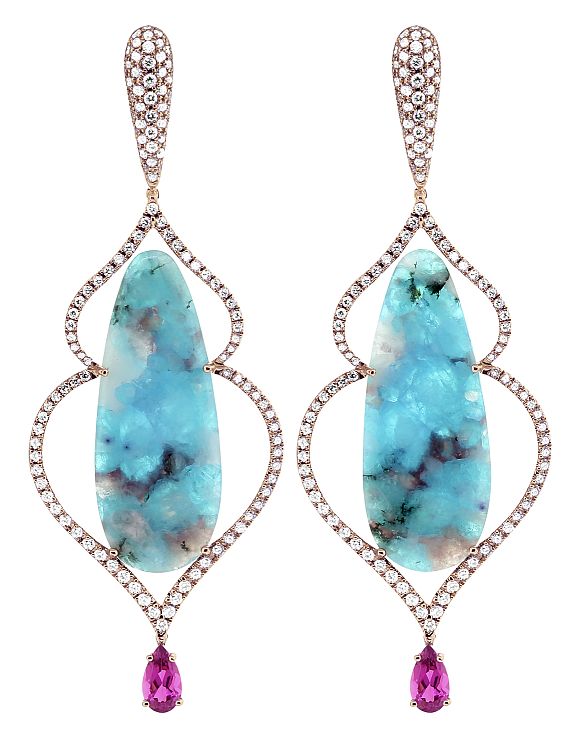
Niveet Nagpal, President and head designer, Omi Privé
“Paraiba tourmaline’s electric-blue to blue-green color is so vivid that it seems to glow from within. The trace amounts of copper found within these gemstones is one of the reasons why they are so rare, and because they have only ever been found in Brazil or the Mozambique and Nigeria regions. As more consumers have been exposed to Paraiba, demand has steadily increased as supply has decreased. When featuring it as a center stone, I like to put all the attention on the Paraiba, so I usually use diamonds, other Paraiba, and opals as accents.”
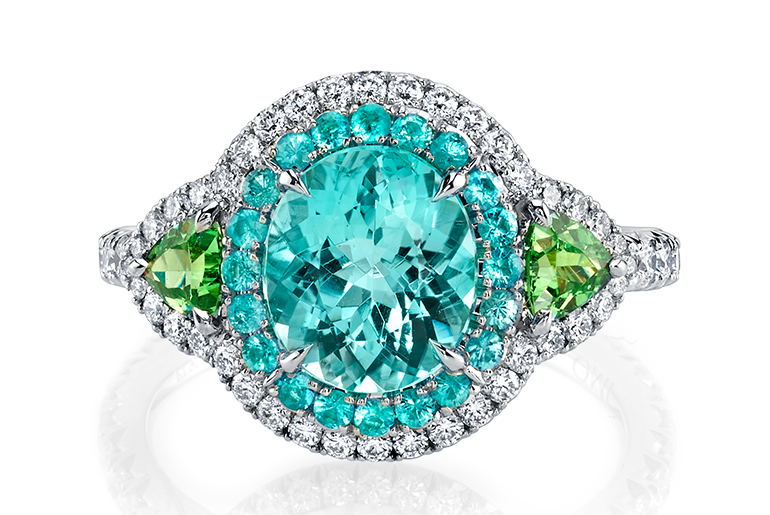
Main image: Victor Velyan ring in 18-karat yellow gold with Brazilian Paraiba tourmaline and diamonds.

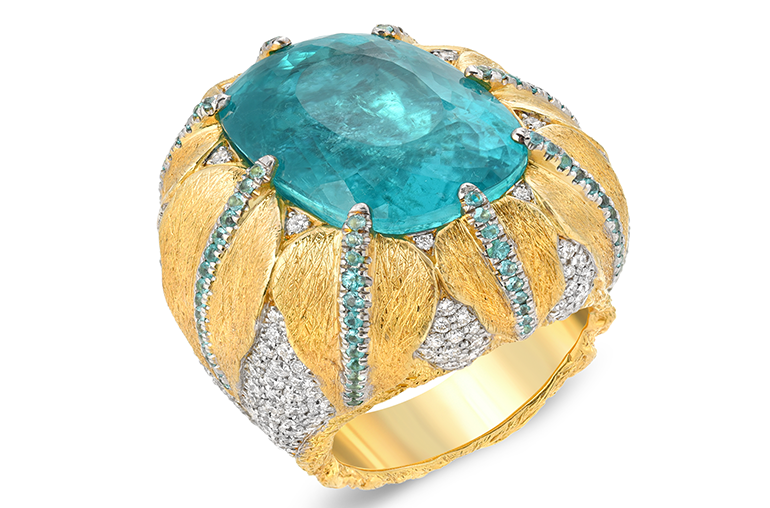
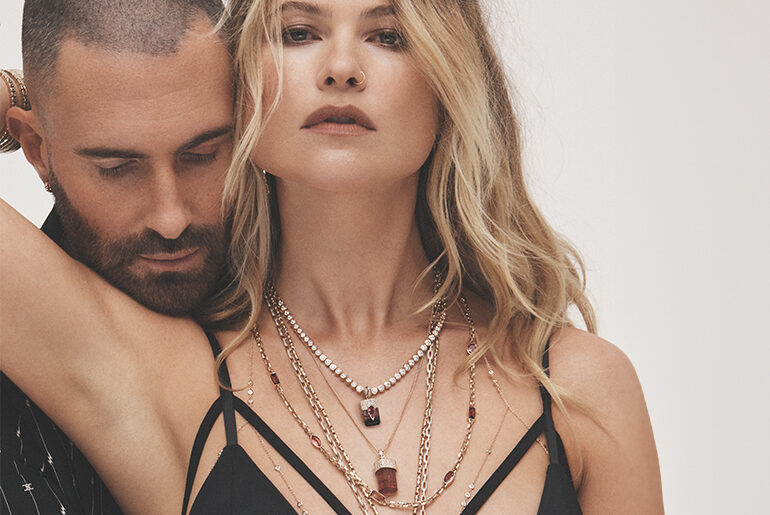
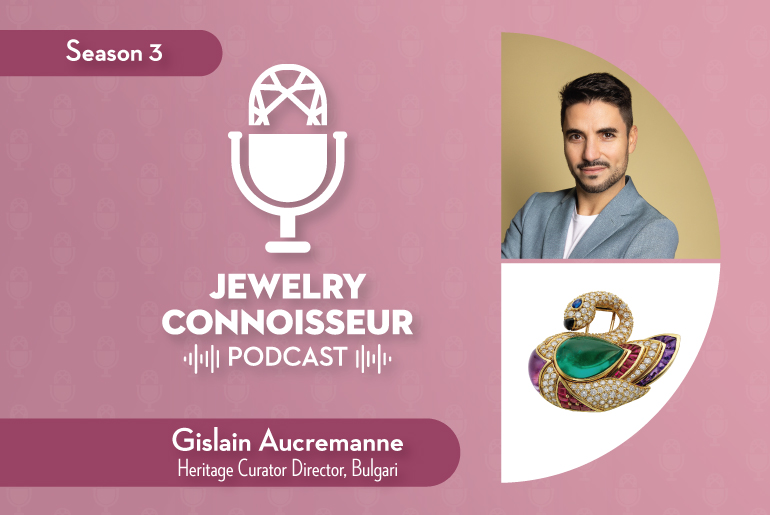
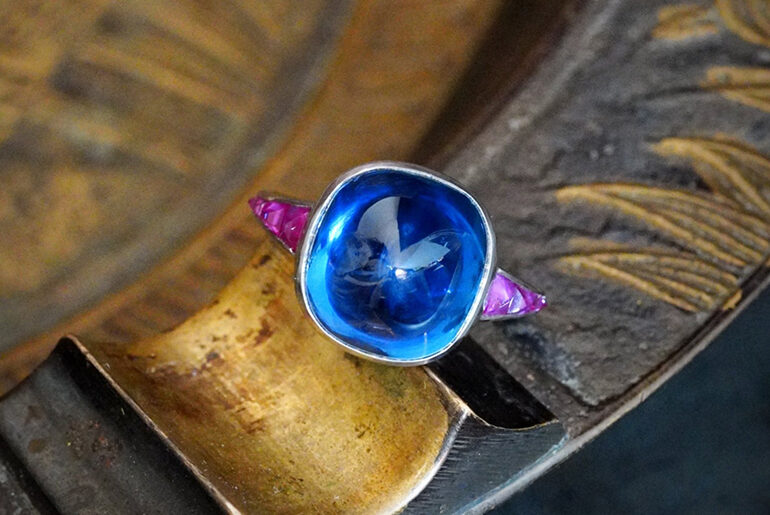
Comments are closed.